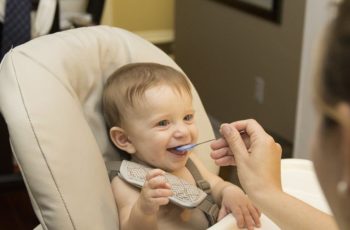As we enter motherhood, we go through many unique experiences. One such wonderful experience is breastfeeding. Not only it keeps the newborn nourished, but also helps in establishing an emotional bond between the mother and the baby. But is breastfeeding really as simple as it seems to be? Maybe not.
Many first time mothers struggle a lot to initiate breastfeeding. Many struggle to continue breastfeeding as they get tired of the discomforts caused by breastfeeding. Along with these challenges, there are several age old myths associated with breastfeeding. Nursing mothers should feel confident and shouldn’t confuse themselves with such breastfeeding myths.
This article lists 7 breastfeeding myths that nursing mothers shouldn’t believe. Let’s have a look.
#1: Breastfeeding makes the breasts sag
Many women believe that breastfeeding makes their breasts sag, which is not true. Breasts have no muscles of their own. They are attached to the chest wall by ligaments. During pregnancy, the breasts may expand in size which causes the ligament to stretch. It is this stretching that makes the breasts sag as we return to our pre-pregnancy weight, not breastfeeding.
#2: You should wash your nipples before each feeding session
Maintaining a good hygiene is important, but washing nipples before you breastfeed is not necessary. The tiny bumps (Montgomery glands) on the areola of the breasts secret an oil like substance that keeps the nipples and the areola clean and moist. Too much washing can snatch away this natural oil and make the nipples dry and scratchy.
Did You Know?
Breastfeeding helps the uterus return to its pre-pregnancy size and shape more quickly – about 4 to 6 weeks in general.
#3: You should eat bland foods while breastfeeding
You can eat everything in moderation (even spicy food) as long as your baby is fine. Passing gas is a natural phenomenon and your baby will pass gas regardless of what you eat. Focus on taking a balanced diet. As a breastfeeding mother, you require healthy, nutritional food.
#4: You shouldn’t breastfeed if you have a clogged duct
On the contrary, you should definitely breastfeed if you have a clogged duct. A clogged milk duct may lead to mastitis (breast infection) if not relieved immediately. Nursing frequently is one of the best ways to empty the affected breast. If your baby doesn’t completely drain the breast, hand express or pump the extra milk to prevent any further clogging.
#5: Giving expressed milk through bottle is same as feeding through the breasts
Breastfeeding and bottle-feeding involves different tongue movements. The act of breastfeeding promotes normal development of the baby’s facial structure, jaws, teeth, and speech. It also offers direct skin-to-skin contact which results in higher levels of oxytocin release and a strengthened mother-baby bonding.
Did You Know?
Oxytocin is also known as the ‘Love Hormone’ as it helps in building a strong emotional connection between the mother and the baby, right from the very beginning.
#6: The size of your breasts influence your ability to produce milk
A mother’s capacity to produce milk depends on her baby’s demand for milk, not on the size of her breasts. As the baby suckles on the breasts, the brain is signaled to produce milk. The more the baby breastfeeds, the more milk is produced in the mother’s breasts.
#7: You can’t get pregnant while breastfeeding
You may not get your periods back if you breastfeed exclusively for six months post-delivery. However, if you’re having sex, you may get pregnant, even though it’s less likely.
Final Take:
It’s good to take advice from friends and family, but it is not wise to blindly trust everything which is being said. Do not believe on each statement you hear about breastfeeding. Learn the truth and feel proud to share the joy of breastfeeding.


